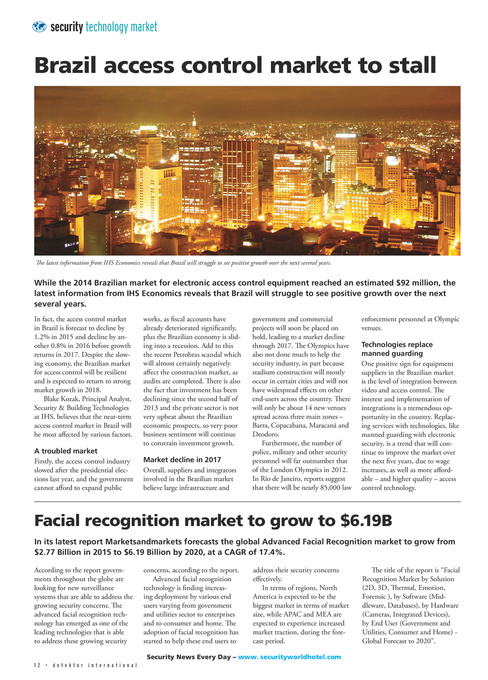- Page 1
- Page 2
- Page 3
- Page 4
- Page 5
- Page 6
- Page 7
- Page 8
- Page 9
- Page 10
- Page 11
- Page 12
- Page 13
- Page 14
- Page 15
- Page 16
- Page 17
- Page 18
- Page 19
- Page 20
- Page 21
- Page 22
- Page 23
- Page 24
- Page 25
- Page 26
- Page 27
- Page 28
- Page 29
- Page 30
- Page 31
- Page 32
- Page 33
- Page 34
- Page 35
- Page 36
- Page 37
- Page 38
- Page 39
- Page 40
- Page 41
- Page 42
- Page 43
- Page 44
- Page 45
- Page 46
- Page 47
- Page 48
- Flash version
© UniFlip.com
- Page 2
- Page 3
- Page 4
- Page 5
- Page 6
- Page 7
- Page 8
- Page 9
- Page 10
- Page 11
- Page 12
- Page 13
- Page 14
- Page 15
- Page 16
- Page 17
- Page 18
- Page 19
- Page 20
- Page 21
- Page 22
- Page 23
- Page 24
- Page 25
- Page 26
- Page 27
- Page 28
- Page 29
- Page 30
- Page 31
- Page 32
- Page 33
- Page 34
- Page 35
- Page 36
- Page 37
- Page 38
- Page 39
- Page 40
- Page 41
- Page 42
- Page 43
- Page 44
- Page 45
- Page 46
- Page 47
- Page 48
- Flash version
© UniFlip.com

security technology market
Brazil access control market to stall
The latest information from IHS Economics reveals that Brazil will struggle to see positive growth over the next several years.
While the 2014 Brazilian market for electronic access control equipment reached an estimated $92 million, the latest information from IHS Economics reveals that Brazil will struggle to see positive growth over the next several years.
In fact, the access control market in Brazil is forecast to decline by 1.2% in 2015 and decline by another 0.8% in 2016 before growth returns in 2017. Despite the slowing economy, the Brazilian market for access control will be resilient and is expected to return to strong market growth in 2018. Blake Kozak, Principal Analyst, Security & Building Technologies at IHS, believes that the near-term access control market in Brazil will be most affected by various factors. A troubled market Firstly, the access control industry slowed after the presidential elections last year, and the government cannot afford to expand public works, as fiscal accounts have already deteriorated significantly, plus the Brazilian economy is sliding into a recession. Add to this the recent Petrobras scandal which will almost certainly negatively affect the construction market, as audits are completed. There is also the fact that investment has been declining since the second half of 2013 and the private sector is not very upbeat about the Brazilian economic prospects, so very poor business sentiment will continue to constrain investment growth. Market decline in 2017 Overall, suppliers and integrators involved in the Brazilian market believe large infrastructure and government and commercial projects will soon be placed on hold, leading to a market decline through 2017. The Olympics have also not done much to help the security industry, in part because stadium construction will mostly occur in certain cities and will not have widespread effects on other end-users across the country. There will only be about 14 new venues spread across three main zones – Barra, Copacabana, Maracanã and Deodoro. Furthermore, the number of police, military and other security personnel will far outnumber that of the London Olympics in 2012. In Rio de Janeiro, reports suggest that there will be nearly 85,000 law enforcement personnel at Olympic venues. Technologies replace manned guarding One positive sign for equipment suppliers in the Brazilian market is the level of integration between video and access control. The interest and implementation of integrations is a tremendous opportunity in the country. Replacing services with technologies, like manned guarding with electronic security, is a trend that will continue to improve the market over the next five years, due to wage increases, as well as more affordable – and higher quality – access control technology.
Facial recognition market to grow to $6.19B
In its latest report Marketsandmarkets forecasts the global Advanced Facial Recognition market to grow from $2.77 Billion in 2015 to $6.19 Billion by 2020, at a CAGR of 17.4%.
According to the report governments throughout the globe are looking for new surveillance systems that are able to address the growing security concerns. The advanced facial recognition technology has emerged as one of the leading technologies that is able to address these growing security
12 • detektor i n te r n at i on al
concerns, according to the report. Advanced facial recognition technology is finding increasing deployment by various end users varying from government and utilities sector to enterprises and to consumer and home. The adoption of facial recognition has started to help these end users to
address their security concerns effectively. In terms of regions, North America is expected to be the biggest market in terms of market size, while APAC and MEA are expected to experience increased market traction, during the forecast period.
The title of the report is “Facial Recognition Market by Solution (2D, 3D, Thermal, Emotion, Forensic ), by Software (Middleware, Databases), by Hardware (Cameras, Integrated Devices), by End User (Government and Utilities, Consumer and Home) Global Forecast to 2020”.
Security News Every Day – www. securityworldhotel.com